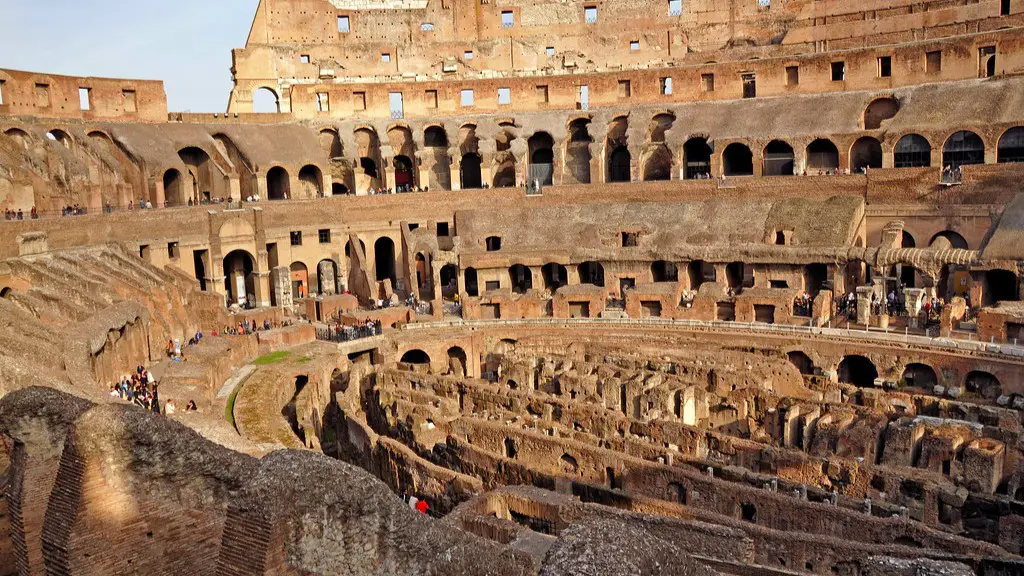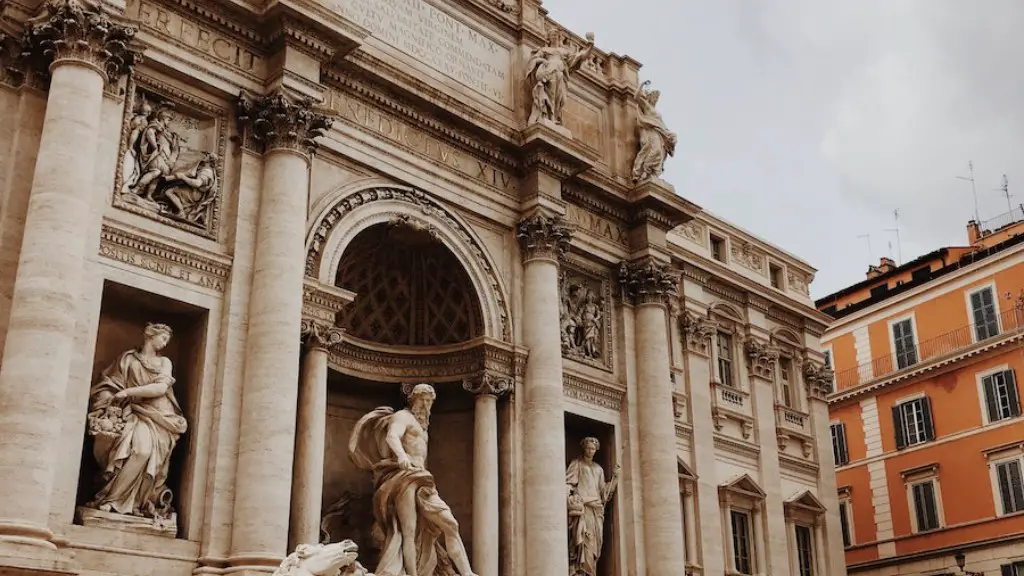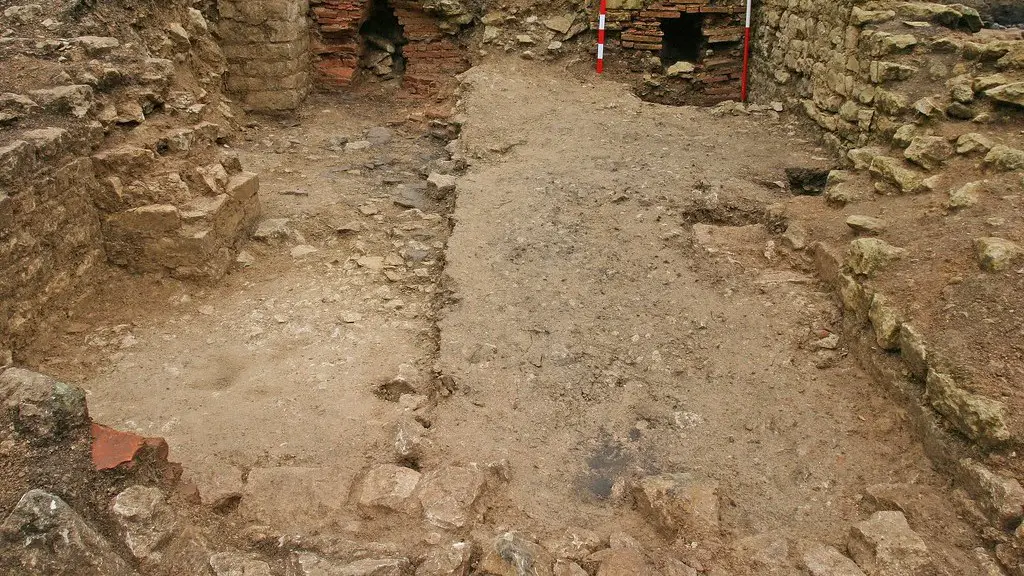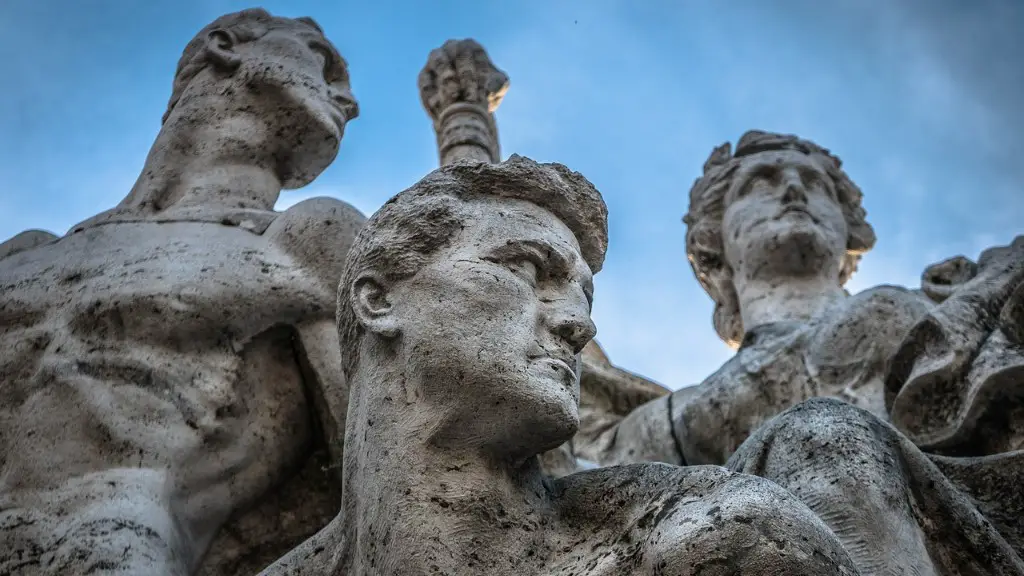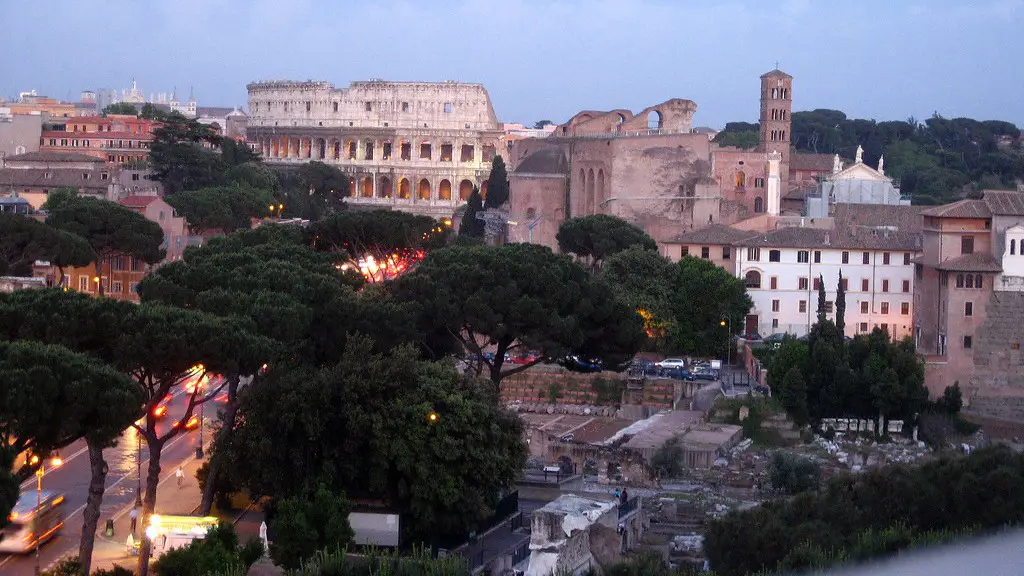Ancient Rome left a lasting legacy in history. Its culture is best remembered for its art, literature and architecture, with the remains of its monuments and buildings still standing today. It was known for its intricate and elaborate architecture, which helped shape the modern cityscape. Rome was also one of the most powerful and influential civilizations of its day, exerting its influence on politics, society, and the world in general. Rome had a strong military presence, and its laws and legal framework still serve as a template for other nations. Rome was also known for its innovative and complex religion, which had many deities, festivals and formal ceremonies.
The city of Rome was founded on the banks of the Tiber river, and soon grew in population and size. The city was divided into 14 regions known as ‘regions’. Rome was a busy metropolis full of life and activity. It was home to artisans, merchants and labourers, as well as senators and powerful rulers. Wealth and power were concentrated among the upper classes, but there was a vibrant middle and working classes that participated in sports, public baths and festivals.
Education was highly esteemed and wealthy families paid to have their children tutored in reading, writing and the classics. Public education was available in the form of gymnasiums and libraries, and some higher forms of education were offered at the Academy of Music and other institutes. Science, literature and philosophy were highly esteemed, and many important texts were produced during this period.
Sport was popular and competitive, with chariot racing growing in popularity as a pastime. Gladiatorial events were a lot more common, although frowned upon by later generations. Stadia were popular venues for competitive sport and often hosted political rallies and other public spectacles. Amphitheatres, such as the Colloseum, provided entertainment for the public and demonstrated the power of the imperial government.
Economically, the Roman Empire was a powerhouse and the trade routes established during its heyday are still in use today. The construction of roads and monuments demonstrated the strength of its people and the grandeur of its culture. Furthering its reputation as a great trading network, the ports along the sea routes were a hub for commerce and the basis of Rome’s impressive economy.
Family was central to Roman society, and there was huge emphasis placed upon strong family values. Marriage was cemented through social and economic bonds as well as religious. Fathers were the head of the household and there existed a clearly established hierarchy, with the eldest male carrying an elevated status. Women enjoyed far more freedoms than in most other ancient societies, being able to own property, run businesses and become educated, although their role was still considered secondary to men.
Legacy of Ancient Rome
The legacy of Rome is hard to overestimate. Its culture, law, engineering and economy have influenced societies for centuries. After the fall of the Roman Empire, the Latin language gave way to many of the modern Romance languages. In terms of education, the modern system of secular learning is derived from the ancient Roman curriculum. The Latin alphabet, as well as its equivalents in other languages, was adopted by countries over the centuries.
The imprint of the Roman Empire can be still be felt today in many ways, from the literary masterpiece of Virgil to the engineering of Roman roads still used in many parts of the world. Currency and metrics were standardized during the empire and many languages were adapted and shaped to the Roman forms. The lasting influence of Rome spans centuries and remains a powerful reminder of its greatness.
Politics in Ancient Rome
Rome was a monarchy for centuries and was ruled first by seven kings and then later by an emperor. This era of government was known as the Julio-Claudian dynasty. During its reign, legislation was written that provided some structure to the political system. This was the beginning of a more organized government, which developed into the Roman Republic. In 509 BC, the Senate was established and provided a central institution for the legislative arm of Rome. It was the Senate’s job to debate, refine and ultimately present proposed laws to the public assembly for consideration. This period saw the rise of notable figures such as Julius Caesar and Cicero.
After the fall of the Republic, the Roman Empire was established and was led by a single Emperor that was officially appointed by the Senate. Emperor Augustus also introduced a system of taxation and military expansion. This period saw the development of the Pax Romana, a period of relative peace and prosperity that lasted for two centuries. As the power of the Senate dwindled, the authority of the Emperor strengthened, leading to increased centralization of power.
Roman Religion
Religion was central to the Roman culture. Its pantheon of gods embodied many aspects of life, from nature to war and death. Temples and shrines were dedicated to these gods and festivals were held in their honour. The Imperial Cult revolved around the worship of the deity-like emperor, with elaborate ceremonies taking place to present offerings and prayer. Roman religion was highly ritualized, with many festivals and holidays dedicated to the gods and goddesses of the Roman cult.
Many of the gods and goddesses of the Roman pantheon had their origins in the myths and legends of neighbouring civilizations. Janus and Jupiter, two of the most revered gods of Rome, were adopted from the Etruscans and Greeks. Religion was very important to the ancient Romans and its influence still shapes the world today. Christianity, the predominant religion of today, emerged during the period of the Roman Empire.
Romans and Technology
The Roman Empire was renowned for its engineering prowess. Its construction of roads, bridges and aqueducts demonstrated its ability to develop the infrastructure needed to sustain a vast and powerful state. One of the many engineering achievements of Rome was the way it managed its water supply. Aqueducts brought water to many cities and towns using gravity to keep the water flowing and sophisticated systems to keep it clean. The Colosseum was a unique example of Roman engineering, with its wide and deep structure capable of hosting up to 70,000 people.
The Romans were also advanced in the area of military engineering. It was during this period that the catapult and ballista, two ancient siege weapons, were first used in battle. The Romans highly valued engineering and used it for their military campaigns, as well as for constructing public buildings and monuments. The engineering accomplishments of the Roman Empire are some of its most significant legacies still in use today.
Roman art and literature
The art and literature of Ancient Rome is renowned for its sophistication and elaborate narrative. Statues, frescos and mosaics were all common during the rise of the Roman Empire and art was used to express different aspects of life. Literature was also highly respected, and many of the works from that period have survived to this day. The literature of Ancient Rome is comprised of works such as the Aeneid, Ovid’s Metamorphoses, and Cicero’s speeches. Most of these works provide insight into the culture, values and beliefs of the ancient Roman people.
The works of ancient Roman authors such as Cicero, Livy and Virgil still influence modern literature today. In addition to these authors, the works of playwrights Plautus and Terence, as well as historians Livy and Suetonius, are also important sources of knowledge of the Roman culture.
Roman Family Structure
The role that family played in Roman culture was very important. Families were typically headed by the eldest male, who was known as the paterfamilias. This family head was the most powerful member of the household and held the power to make decisions and allocate resources. The paterfamilias was also the sole heir of the estate and had control over the marriage prospects of his children.
Wives had an important role to play in Roman households, as they had considerable responsibilities and power over the family. As a result of the status afforded to women in Roman society, many enjoyed considerable freedoms and rights, and could own property, run businesses and become educated. Slaves also played an important role in Roman households, taking on menial roles such as running errands and doing housework.
Fall of Ancient Rome
The fall of the Roman Empire began in the 3rd century AD, when a series of civil wars and invasions weakened its structure. The political and economic instability caused by military campaigns led to a period of decline that saw the fall of the Western Roman Empire in 476 AD. The Eastern Roman Empire, which was based in Constantinople, survived until 1453 AD. The cultural legacy of the Roman Empire is still evident all over the world, from its language and literature to its engineering feats and legal system.
The fall of Rome left a vacuum that was soon filled by tribal kingdoms and different cultural influences. How Rome recovered from its fall has been the subject of much debate, but what is certain is that it left a lasting legacy. The Roman Empire has been remembered throughout history for its culture and innovation, and we can still see remnants of its greatness today.
